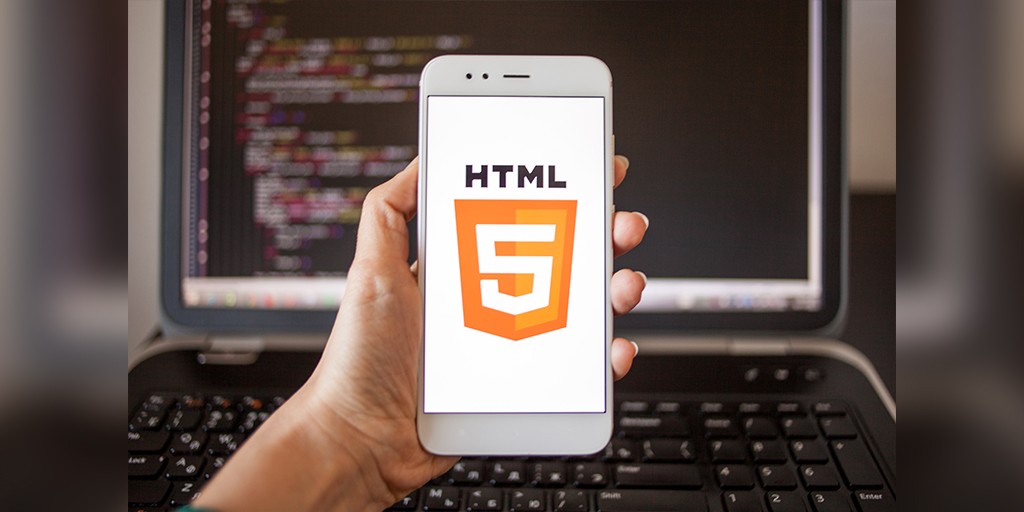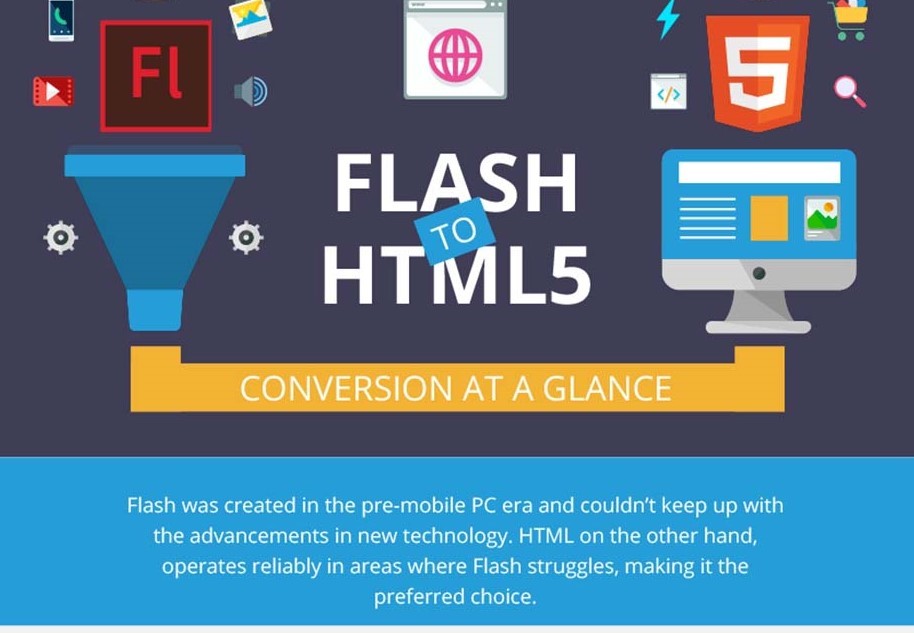
Why Is Online Learning Moving from Flash to HTML5?
This blog talks about reasons online learning is updating the content from Flash to HTML5
Developing effective e-learning solutions involves factoring in a lot of variables to arrive at a model that is best suited to your requirements. There are a host of tools, software, programming languages available to developers to choose from, but when it comes to creating interactive online learning solutions, the choice usually narrows down to two alternatives – Adobe Flash and HTML5.
Until recently, Flash was the most popularly used tool for authoring e-learning courses or training programs, thanks to its scope to incorporate engaging animations, immersive graphics, and interactive features.
However, with tablets and smartphones emerging as the preferred medium for accessing these learning materials and fewer devices supporting Flash, HTML5 is emerging as a go-to alternative for most developers.
That said, there is still a section that is resisting the idea of converting Flash to HTML5, primarily because they are well-versed and more comfortable using Flash. Also, with Flash slated to be discontinued by the end of 2020, there is an urgent need to convert Flash-based content to HTML5.
Table of Contents:
How is HTML5 better than Flash?
To consider converting Flash to HTML5, you need to be certain that one is better than the other. For that, it’s important to decipher how Flash and HTML5 work:
Flash: This tool has been around a lot longer than the counterpart it’s competing with today. For the longest time, if you saw interactive elements not just in online courses but on any website, it meant looking at Flash content.
Just because it has reigned supreme all these years doesn’t necessarily mean it is the best available option. That is because Flash stores all interactive content in containers that are delivered using the Flash Player plug-in.
Since these containers cannot be tweaked as per the requirements of the platform that they are being accessed on, the content is displayed the same way on a desktop PC as well as a smartphone or tablet. This hinders the responsiveness of the e-learning content.
HTML5: On the other hand, HTML5 generates interactive content using pure code, which means the content here isn’t pre-created and stored. Instead, it is built on coded characteristics that a browser uses to render the content as a page is loaded. This fundamental difference allows HTML5 to create pages that can behave differently, as per the device they are being accessed from.
Based on this one marked difference, HTML5 becomes the more robust alternative to Flash in the following ways:
- Mobile-Friendly: User trends indicate that soon the number of mobile users will outgrow the number of desktop users worldwide. With Flash lacking the ability to make interfaces mobile-friendly, it results in subpar mobile user experience. On the other hand, HTML5 is a mobile-ready tool that allows e-learning content to behave differently on different devices.
- Support Across Browsers: Even the most well-rounded e-learning solutions can fall flat if they aren’t displayed effectively on certain browsers. Converting Flash to HTML5 takes that concern out of the equation, as the latter offers cross-browser support.
- Enhanced Interactions: HTML5 allows you to build truly responsive solutions that allow the learners to connect with the content. With this tool, you can create online learning modules that are dynamic and make the learner feel like a part of the story that unfolds on their screens.
- Improved Storage: HTML5 comes with local storage support that facilitates the running of e-learning apps and modules without the need for third-party plug-ins like the Flash Player. This not only results in better storage but also ensures more efficient data security.
How does HTML5 Enhance the eLearning Content?
Interactive elements such as compelling graphics and quality animations are the pre-requisites for effective e-learning content. Here’s how HTML5 supersedes Flash in enhancing your e-learning content such that it remains effective across devices and platforms:
- Builds Mass Appeal: Irrespective of demographics, people today are keener to use their smartphones and tablets to consume content of any kind. HTML5 can help you create learning material that is responsive, can intuitively adapt to different screen sizes, and be optimized for handheld devices with the help of meta tags.
- Promotes Learning On The Go: Upskilling can be a priority for employees as well as organizations. However, time constraints can often come in the way of leveraging the full potential of e-learning for skill development. HTML5 helps you navigate that stumbling block with e-learning content that can be accessed from anywhere, at any time.
- Customized Course Content: The flexibility offered by HTML5 accords you the scope to tailor employee training content as per user preferences and demographics. Besides, since no plug-in or third-party software is needed to run the content created with HTML5, the content flow is more seamless. This, in itself, is reason enough to consider converting Flash to HTML5.
- Responsiveness: Cross-domain support, adaptability, and responsiveness of these e-learning modules can motivate your target audience to sign up for more courses, as the content is not hindered by limitations of devices, platforms, browsers, and so on.
- More Interactive Content: While Flash supports the integration of a wide cross-section of multimedia, its effectiveness can be restricted due to lack of plug-in installation at the learners’ end. Most people are put off by the idea of searching for applications and plug-ins to access a course material optimally. This drawback can be eliminated with code based HTML5. As audios, videos, graphics, and animations play more seamlessly, the learning process becomes more organic.
- Gamified Learning: Converting Flash to HTML5 can facilitate the use of gamified learning and enhance the interactivity of e-learning programs. HTML5 publishing tools for e-learning such as iSpring, Camtasia Studio, Articulate Storyline, and Adobe Captivate can be used to create gaming modules that can run seamlessly across devices.
Guide:
How to Convert to Flash-based Content to HTML5
Is HTML5 the Future of Online Learning?
HTML5 has fast emerged as the new industry standard. A sizeable majority of the e-learning courses today are being authored in HTML5. The growing acceptance of this new tool has been further propelled by several online platforms discarding Flash in its favor. For instance, YouTube is now using HTML5 sweepingly for all its interactive content, while Flash is out the door.
Most organizations are already converting Flash to HTML5 for their online training content so that the courses built with Flash can also be ramped up to the expected standards of responsiveness. The bottom line is that HTML5 is expected to get better with time, as the technology supporting it advances further, and it’d be a smart business move to embrace this sweeping change now.

Vice President – Digital Content Transformation. He is PMP, CSM, and CPACC certified and has 20+ years of experience in Project Management, Delivery Management, and managing the Offshore Development Centre (ODC).







